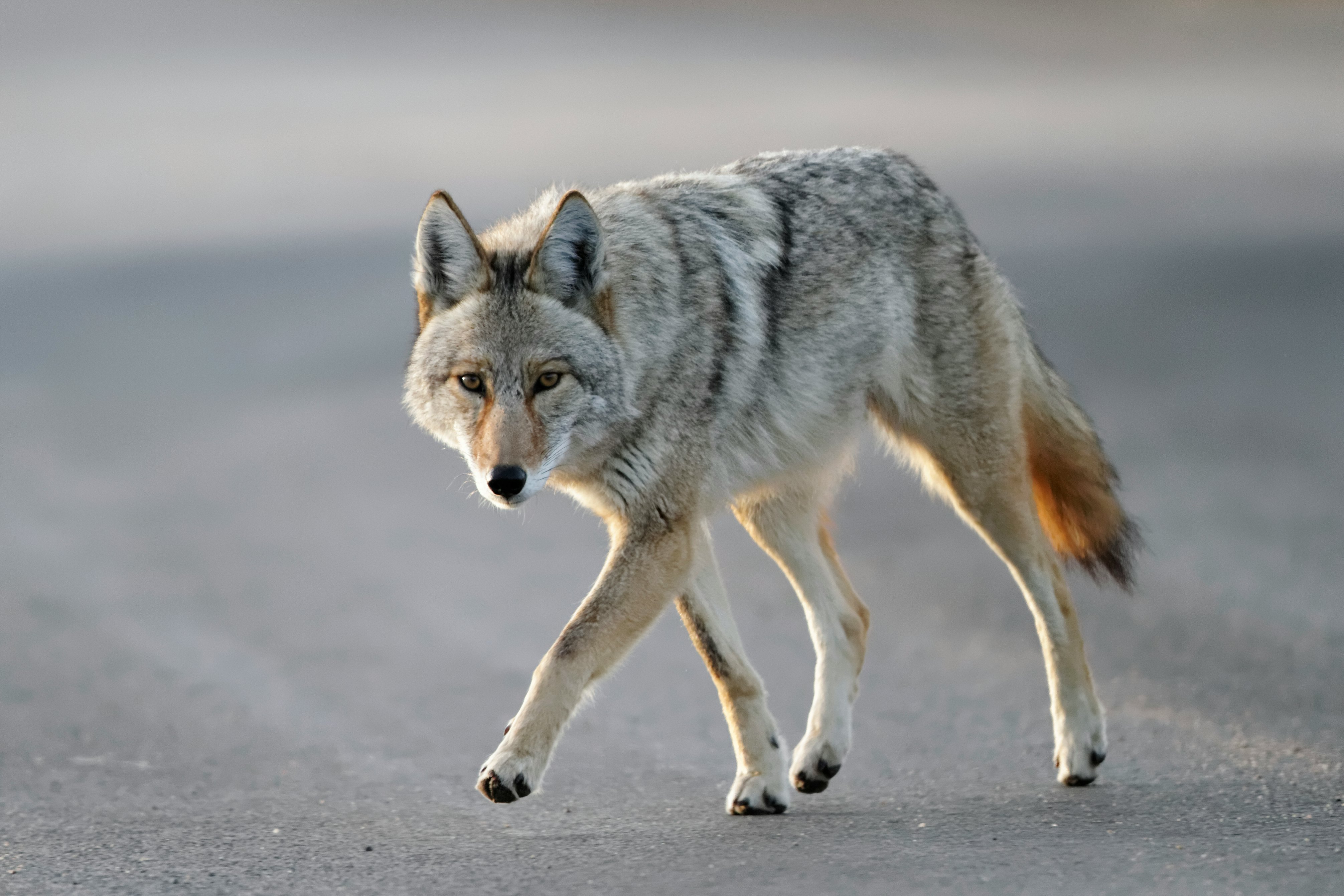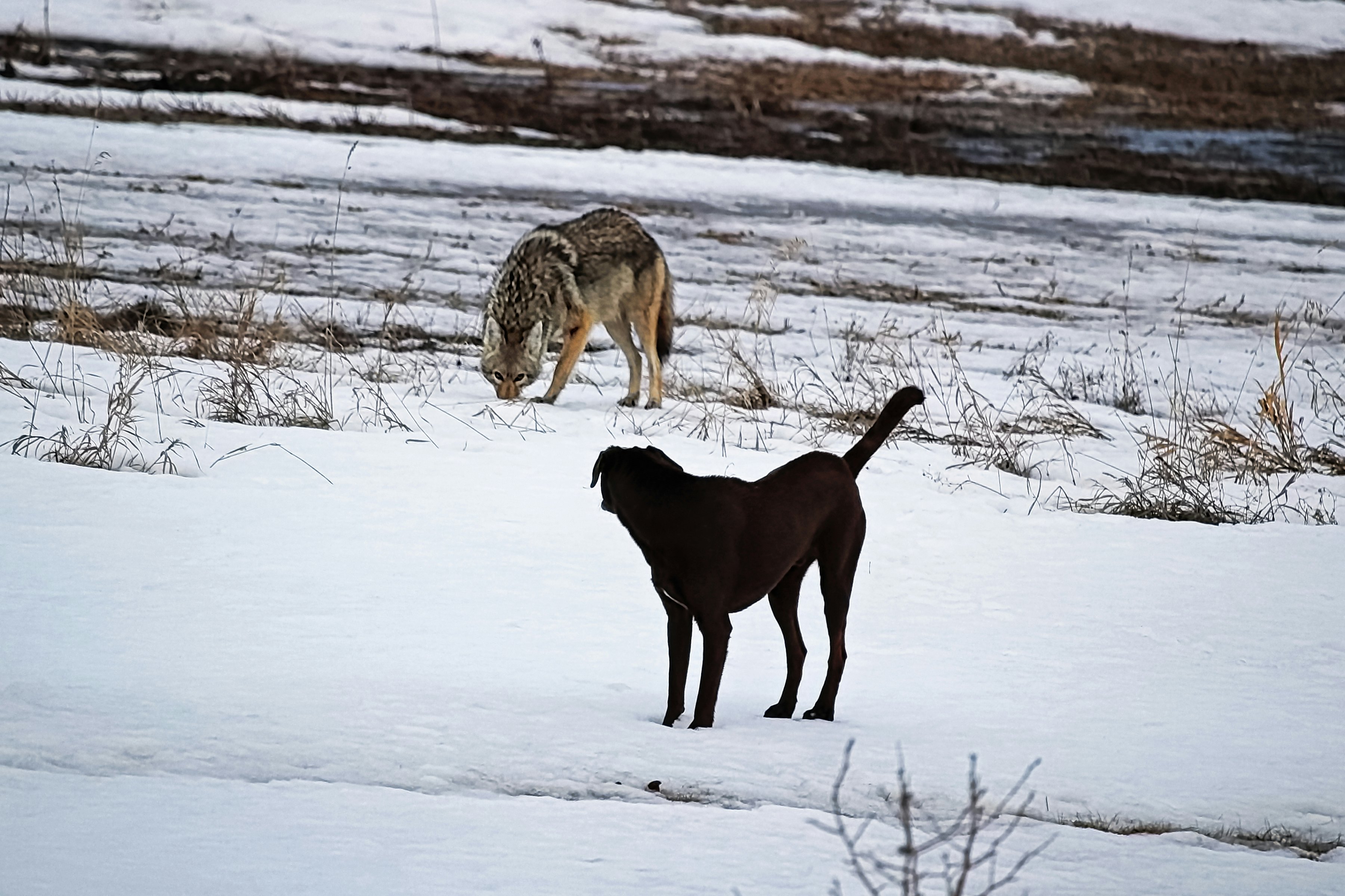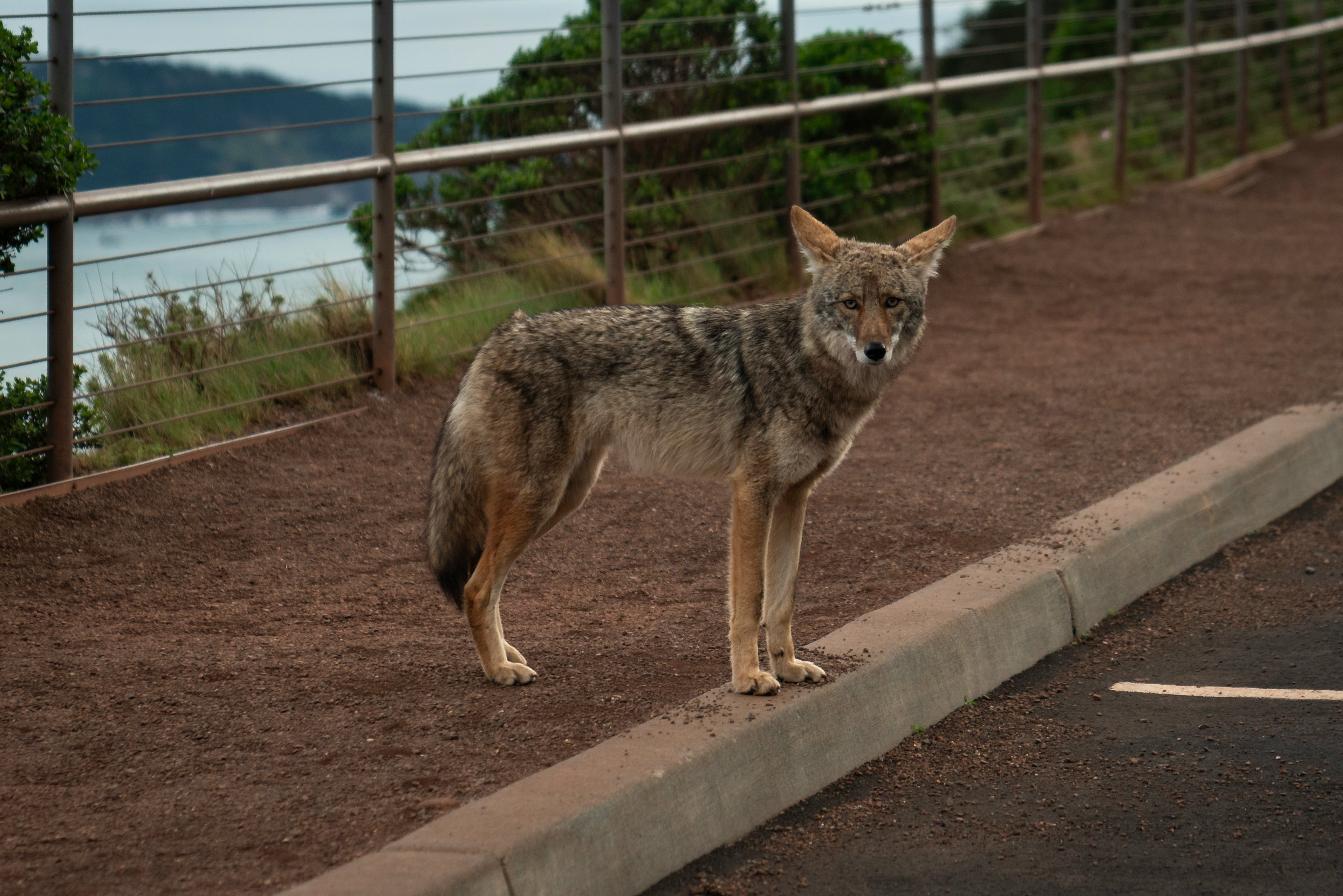
If you’re a pet owner and live in an area with coyotes, you need to be prepared for the possibility that you’ll encounter coyotes, especially as coyotes are moving further into urban landscapes across the U.S.
Most of these interactions won’t be an issue, but in rare cases, coyote attacks on pets do occur.
“The establishment of coyote populations in urban areas across North America has been accompanied by increased rates of human–coyote conflict,” write researchers in a 2022 paper.
Inverse spoke with coyote and pet experts on what to know if you encounter a coyote and how to keep your furry friend safe. Most negative encounters with coyotes can be avoided by humans making proactive behavioral changes and receiving education on how to properly handle coyote encounters.
“From my experience, coyotes are extremely patient. They will do everything they can to avoid a conflict,” Gina Farr tells Inverse. Farr is a national wildlife educator for Project Coyote, a California-based nonprofit promoting coexistence between people and wildlife.
Are coyotes a threat to pets?
By and large, coyotes are not generally a threat to humans or pets. Simply seeing a coyote does not mean they will harm or even approach your pet.
“The presence of coyotes does not necessarily mean that there's any issue,” Farr says. But Farr says there are some circumstances under which a coyote might attack a pet — typically either because they are defending themselves or because they see the animal as prey.
Cats
Farr says that coyotes view cats similarly to rabbits or other potential prey.
“A coyote doesn't know the difference between a cat and a rabbit. They are the right size. They act in similar ways,” Farr explains. For that reason, it’s crucial not to let your cat roam outdoors unattended in areas where coyotes reside — especially at night when coyotes are likely to be active.
Dogs
Small dogs fall into a similar category as dogs where coyotes may view them as prey. “If you see a small dog and a coyote is nearby, pick up your dog,” Farr says.
It’s a different matter when it comes to larger dogs, since coyotes are more likely to view them as other coyotes. If a coyote attacks a larger dog, it’s typically because they are defending their den or because the dog has been aggressively chasing them.
“If a larger dog does get hurt, it's because really the coyote has gotten to the end of its rope and it needs to try and defend itself,” Farr adds.
For all these reasons, it’s important not to let dogs roam free without supervision if you live in an area with coyotes or other wild animals.
Can I leave my pet alone in the backyard during the day?
“It's a gamble,” Leigh Siegfried, founder of the research-based dog training company Opportunity Barks, tells Inverse.
Liz Dimit, franchise trainer and dog expert for pet daycare company, Dogtopia, is more unequivocal.
“Do not leave your small to medium-sized dogs in the yard alone,” Dimit says.
In general, if you have a pet — especially a cat or a small dog — it’s best to keep them indoors to reduce the likelihood of a coyote or other wild animal like a hawk snatching them up. Coyotes can also jump fences, so even enclosed yards can be unsafe if you’re not keeping an eye on your pet.
“Cats or dogs should never be left outside without supervision if you live in an area where coyotes are prevalent. Even fenced yards might not be coyote proof,” Chyrle Bonk, a veterinarian at PetKeen, tells Inverse.
Can I walk my pet without a leash if there are coyotes around?

It’s not a good idea to keep your pet off-leash if you live in an area with coyotes, experts say.
“Leash walking is always best, especially if outside of a fence,” Bonk says, adding that a short or non-retractable leash is typically safest.
“A dog on a leash can still be a target if you allow the pup to wander on long lines,” Dimit adds.
But the choice of leash also depends on your relationship with your dog and your ability to recall them quickly.
“If I can't call them back to me easily, a long line or retractable is a better scenario,” Siegfried explains.
But that doesn’t mean you can’t take your dog with you on long walks or hiking trips — but you should avoid going at night when coyotes are most likely to be active. Taking a small dog out on a walk at night is especially risky, Farr says.
Bonk says adding in a walk at midday instead of at nighttime can help your pet get the exercise they need while minimizing coyote encounters.
How can we protect pets from coyotes?
In short: you can protect your pet by changing your own behavior.
“Although coyotes have been known to attack humans (and pets) ... risks are minimal and we feel that the majority of attack incidents could be reduced or prevented through modification of human behavior,” writes the Urban Coyote Research Project on their website.
Coyotes that are “food-conditioned” may follow humans because they have been conditioned to seek food — likely because humans are indirectly feeding them. Farr says you should avoid feeding your pets outdoors to reduce the likelihood of drawing a coyote’s attention. Keep garbage securely covered. Do not feed coyotes or try to take selfies with them.
“When we start changing their behavior through feeding them — that's actually when we come into conflict with them,” Farr says.
As omnivores, coyotes typically won’t attack pets as prey unless they have no other alternative, Farr explains. Prevent your pets from roaming outdoors without supervision and you will avoid making them easy prey for coyotes.
The Urban Coyote Research Project also offers resources on reducing conflicts with coyotes.
What should I do if I encounter a coyote?

Even if you take all the possible precautions, it’s still possible you’ll encounter coyotes when taking your pet for a walk.
First things first: get control of your pet, especially if they’re trying to chase the coyote. It’s also important that you remain calm and do not run away.
“Bring them as close to you as you can and have a secure hold on their leash. Have them sit or lie down,” Bonk says.
“If your pup is starting to alert and react, simply start walking backwards at a steady pace. Do not turn your back on the coyote,” Dimit adds.
Next, Farr says you should practice hazing, which is a tactic for scaring off coyotes. Stand your ground, and maintain firm eye contact with the coyote. Farr says you can wave your arms, stomp, and yell at the coyote to go away.
Experts suggest using body language to make yourself appear threatening to the coyote so it flees. Do not stop hazing until the coyote fully retreats.
“You can even yell and make yourself big and animated to help deter the coyote from advancing,” Dimit says
You can also carry “hazing” items to deter the coyote.
“Tossing objects can be helpful if needed to create space and encourage flight or avoidance with the coyote if you are under an active threat,” Siegfried says.
Farr says a simple pop-up umbrella can be an effective hazing tool to surprise coyotes. Dimit and Siegfried suggest bringing personal noise makers like a loud whistle, airhorn, or a can with coins which you can use to scare off coyotes.
“You may also choose to pack a whistle, horn, or loud bell that will emit enough noise to frighten a coyote,” Bonk adds.
For further resources on handling coyote encounters, consult the Coyote Project’s resources page, including their guide on coyote hazing and coyote-dog interactions.
Can I train my pet to handle coyote encounters?
It’s not a bad idea to try to prepare your pet ahead of coyote encounters, but it may not be effective.
Siegfried says you can try to practice an “advocation scenario” where you prep your pet to get between your legs or stick closer to you when a wild animal approaches. You can also try to stay ahead of your pet if you spot a coyote to reduce the likelihood of your pet coming into
“This is basically saying to the dog, "you stay there, I'm going to handle this situation for both of us,” Siegfried says.
Still, the best thing you can do ahead of coyote encounters is to prepare yourself. If you’re calm and assured, your dog will follow your lead.
How else can I protect my pet?
If you live in an area where coyotes have recently attacked pets, you may want to take additional precautions while walking your dog.
You can also purchase a spiked coyote vest for small dogs or carry citronella, compressed air, or other repellants to deter coyotes on walks.
Finally, installing coyote rollers to the top of your fence or add-ons to prevent coyotes from digging underneath can be a good idea. Keep your yard well-lit and make sure it is predator-secure. But again, the safest bet is to keep pets indoors when left unsupervised. Remain aware of your surroundings when walking your pet, especially at night.
The Inverse analysis — In general, if you take steps to change your behavior and know how to react during coyote encounters, you should be able to keep your pet safe.







